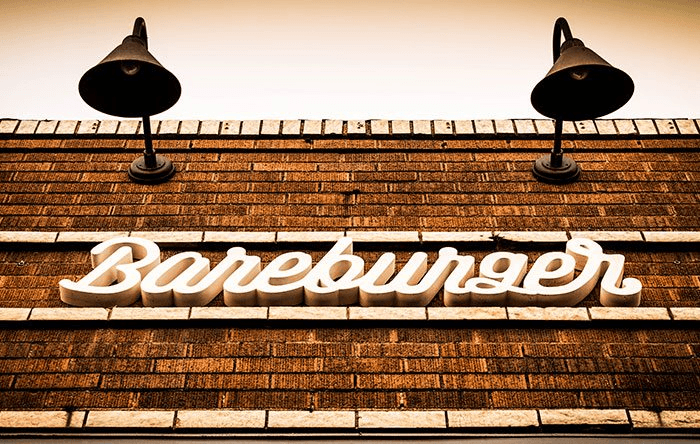The people have spoken, and your restaurant franchise is a winner.
In a sea of restaurants nationwide, yours has stuck out and been successful. That’s not a feat to be taken lightly, and as the old saying goes, you should never quit while you’re ahead.
Therefore, it might be time to expand your franchise and lay the foundation for one (or even several) more franchise locations. Before you take the plunge, we’d recommend taking a practical and systematic approach to expanding your franchise to ensure the process results in a profitable endeavor.
Read on for our actionable, step-by-step process on how to expand your franchise.
Step 1: Audit Your Current Location(s)
Before you start planning for your future, take a look at your past and your present.
On the surface, your franchise may seem like it’s doing fine—maybe even great! Still, you should conduct a thorough audit of your current restaurant(s) before expanding your business further.
Here are some of the questions you should ask yourself. Take the time and effort to give honest answers, and put in the work to find the numbers and rationale for each one:

One final tip here: if you have the funds, you may want to bring in an outside party, such as a restaurant consultant, to assist in your restaurant audit and give you honest feedback on your growth potential.
Nearly two-thirds of aspiring franchisees will plan to contact a franchise consultant before opening, and considering it costs hundreds of thousands (or even millions) to open and start a restaurant location, a consultant could be your most crucial investment.
Step 2: Consult With Other Multi-Location Franchisees
While all of your numbers and data may point to expanding your franchise, there are details and stories about expansion that numbers can’t always tell you. Instead, you’ll have to look to those with experience and knowledge of how to expand a franchise.
If the business is large enough, reach out to your franchisor to see if they can put you in touch with successful multi-location restaurants—preferably those in your area or location type (rural, urban, or suburban).
They’ll be able to provide you with the insight needed on what the process of franchise expansion would really look like for you so you can decide whether or not to pursue it and prepare for what’s coming your way.
Step 3: Choose a Location
After auditing your current performance and checking in with those more experienced than you, you’ve decided to move forward with expanding your franchise.
Next, you need a location.
One crucial question to answer at this stage is whether you’ll purchase an existing franchise or open a new one.
Taking over an existing franchise drastically lowers opening costs and the initial investment. However, it can limit your options if few franchisees are selling—and if they are, there may be a reason, such as low sales, high operating costs, or staff retention issues. You should do your due diligence and look into potential risks before making this move.
Opening a new location often requires more capital and effort, specifically regarding the process of looking for, analyzing, and comparing location options. However, this option gives you the best path forward if you want to move fast and don’t have the option of purchasing an existing franchise.
Step 4: Conduct a Feasibility Study
Your ultimate choice of location should allow you to move forward with your restaurant feasibility study. The study is your way of analyzing how feasible your expansion idea is by answering the following questions:
- Will my franchise’s concept stand out compared to other restaurants in the location I’ve chosen?
- How many locations are in proximity to my desired location, and is this number an advantage or a disadvantage?
- Will the concept appeal to people in this market? Why or why not?
- How do expected opening costs compare to projected revenue?
- Will I hit my financial goals? If so, when?
One thing to remember here is that this is not your business plan. It’s basically the pre-work needed to determine if you should even write a business plan. After all, if the business as initially pictured is not feasible in the long-term, why bother moving forward with a business plan?
Sometimes, feasibility studies suggest you shouldn’t move forward with the business idea as it stands. If this is the result of yours, we suggest going back to the previous step and considering a new location, then running the study again to see if the new location changes the result of the study.
Step 5: Create a Business Plan
Once your business idea is determined feasible, you can move forward with drafting your restaurant business plan.
Since this is (at least) your second business, you should have written a business plan already, so we won’t bore you with the details of what a good business plan should contain.
What we will say, however, is that this business plan should be completely distinctive from any previous business plans you’ve written in the past.

Remember, you are opening a brand new business. While some of the contents of your previous business plan(s) may be applicable—such as your menu items and your branding—your location-based market analysis, operations plan, and financials section should be entirely different from previous plans.
Step 6: Source Capital
Finding and securing capital, such as a restaurant business loan, isn’t always easy. Though with your business plan and the recognition of your franchise’s brand, you may have an easier time than starting a completely new brand. You’ll also be able to point to your previous franchise’s success to convince lenders of your skills as an entrepreneur.
Looking for a new source of capital this time around? Consider looking to:
- Banks
- Merchant Cash Advances
- Angel Investors
- Friends & Family
Step 7: Appoint a Team to Oversee Your Existing Location(s)
Once you have your location picked and your capital sourced, it’s time to shift your efforts towards bringing your new location to fruition.
However, opening a business can easily become a full-time job, which limits the amount of time you’ll have to manage your existing locations. To ensure both your new and existing location(s) succeed, consider passing off business-critical tasks to your managers or promoting team members to higher positions.
With this addition of duties often comes the promise of growth alongside the business. For example, telling aspiring restaurant leaders that you’ll be willing to hire your new location’s manager internally should add fuel to the fire of their focus.
Step 8: Prepare for Opening Day
Once the paperwork’s all done and the right people are in place, it’s time to build.
The most time-consuming part of preparing for opening is usually renovations and construction. You’ll have to work with contractors and suppliers, acquire permits, and stay in touch with your franchisor to make sure you’re staying brand compliant.
While the construction is happening, you’ll want to use this time to handle other logistics before opening, such as:
- Recruiting and hiring employees
- Ordering and installing equipment
- Securing necessary licences
- Refining your sales forecasts and revenue goals
- Developing location-specific marketing & social media plans
- Acquiring PR & local news mentions
Additionally, you’ll want your tech in place for day one. This includes getting systems in place like:
- A Point-of-Sale System
- Scheduling tools
- Online ordering software
- Gift card and loyalty software
- A credit card processor
Often, your franchisor will have these pre-selected for you to keep consistent with pre-existing business-wide systems, so check with your franchisor before making any big decisions yourself.
Step 9: Open
It’s finally time for your restaurant grand opening.
You’re prepared for this. As an experienced restaurateur, you know the joys and struggles of opening day. For an existing franchise, sales can start booming as soon as the doors open—which can be stressful if your staff isn’t as experienced as you need them to be.
To counter this, consider a soft opening to get staff prepared for what’s to come.
Once your doors open, you’ll want to immediately begin monitoring and analyzing sales to see if any adjustments to your sales forecasts may be needed down the line. You’ll also want to keep your eye on the following metrics and trends to course correct as soon as possible:
- Food cost variance and spillage
- Inventory turnover and waste
- Employee turnover rate
- Customer satisfaction scores and feedback
- Busiest hours and shifts
Step 10: Rinse and Repeat!
Assuming all goes well, you’ve proven that you’re capable of owning and successfully running multiple restaurant franchises locations.
So why stop there?
If the market demands it, start looking at new locations, conducting more feasibility studies, and planning for even more franchise expansion. There’s a reason your restaurant franchise is popular all over the city, the state, the country, or even the world, so lean into your success and start satisfying more customers with a focused, sustainable growth model.
Other Tips & Strategies for Expanding Your Franchise
1. Add more units
One of the most straightforward ways to expand is to add more units. But, it’s easier said than done.
Before you get excited about adding a second and third unit to your franchise, you have to be successful in your first one. Multi-unit success depends on well-oiled systems and operational know-how.
Jami Bond, vice president of franchise development at Goodcents, asks all franchisees who are interested in opening second or third locations “if they feel like they can take a vacation for five days and not check in with the restaurant. A multi-unit owner has to be able to let go and hire someone they trust to run things when they aren’t there, because you can’t be in two places at once, of course.”
By understanding some of the common franchise problems, and the issues that challenge franchisee—franchisor relationships, you can put yourself on a more successful path—one with many more units ahead.
2. Help your franchisor grow where you can
A franchisor is only as successful as its network of franchisees. As you grow your business, the overall brand performs better. Many franchises offer more resources and incentives to their top performers, too, making future growth easier the more you do it.
3. Get onboard the franchise advisory council
Get more involved in the larger business by joining your company’s franchise advisory council (FAC). This will give you more face time with leadership in the company, cementing yourself as a trusted source for all things going on in the world of the franchisees. You’ll also have a strong voice and the ability to help grow the business at large.
4. Diversify with another franchise brand
You can add more units of the existing brand—or you can look to a different franchise brand for growth. Proven success and a good track record will make you more attractive to other franchisors. And a diverse portfolio can help you capture different segments of the market in your area. Just be sure that you’re choosing a brand that’s different enough from your other franchises, to avoid cannibalizing your own business.

AJ Beltis, Author
AJ Beltis
Author
AJ Beltis is a freelance writer with almost a decade of experience in the restaurant industry. He currently works as a content manager at HubSpot, and previously as a blogger at Toast.
